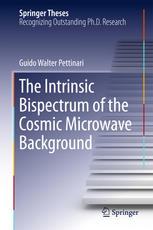

Most ebook files are in PDF format, so you can easily read them using various software such as Foxit Reader or directly on the Google Chrome browser.
Some ebook files are released by publishers in other formats such as .awz, .mobi, .epub, .fb2, etc. You may need to install specific software to read these formats on mobile/PC, such as Calibre.
Please read the tutorial at this link: https://ebookbell.com/faq
We offer FREE conversion to the popular formats you request; however, this may take some time. Therefore, right after payment, please email us, and we will try to provide the service as quickly as possible.
For some exceptional file formats or broken links (if any), please refrain from opening any disputes. Instead, email us first, and we will try to assist within a maximum of 6 hours.
EbookBell Team

4.8
84 reviewsNominated as an outstanding thesis by Professor Robert Crittenden of the Institute of Cosmology and Gravitation in Portsmouth, and winner of the Michael Penston Prize for 2014 given by the Royal Astronomical Society for the best doctoral thesis in Astronomy or Astrophysics, this work aims to shed light on one of the most important probes of the early Universe: the bispectrum of the cosmic microwave background.
The CMB bispectrum is a potential window on exciting new physics, as it is sensitive to the non-Gaussian features in the primordial fluctuations, the same fluctuations that evolved into today’s planets, stars and galaxies. However, this invaluable information is potentially screened, as not all of the observed non-Gaussianity is of primordial origin. Indeed, a bispectrum arises even for perfectly Gaussian initial conditions due to non-linear dynamics, such as CMB photons scattering off free electrons and propagating in an inhomogeneous Universe. Dr. Pettinari introduces the reader to this intrinsic bispectrum in a pedagogic way, building up from the standard model of cosmology and from cosmological perturbation theory, the tool cosmologists use to unravel the history of the cosmos. In doing so, he introduces SONG, a new and efficient code for solving the second-order Einstein and Boltzmann equations. Next, he moves on to answer the crucial question: is the intrinsic bispectrum going to screen the primordial signal in the CMB? Using SONG, he computes the intrinsic bispectrum and shows how its contamination leads to a small bias in the estimates of primordial non-Gaussianity, a great news for the prospect of using CMB data to probe primordial non-Gaussianity.